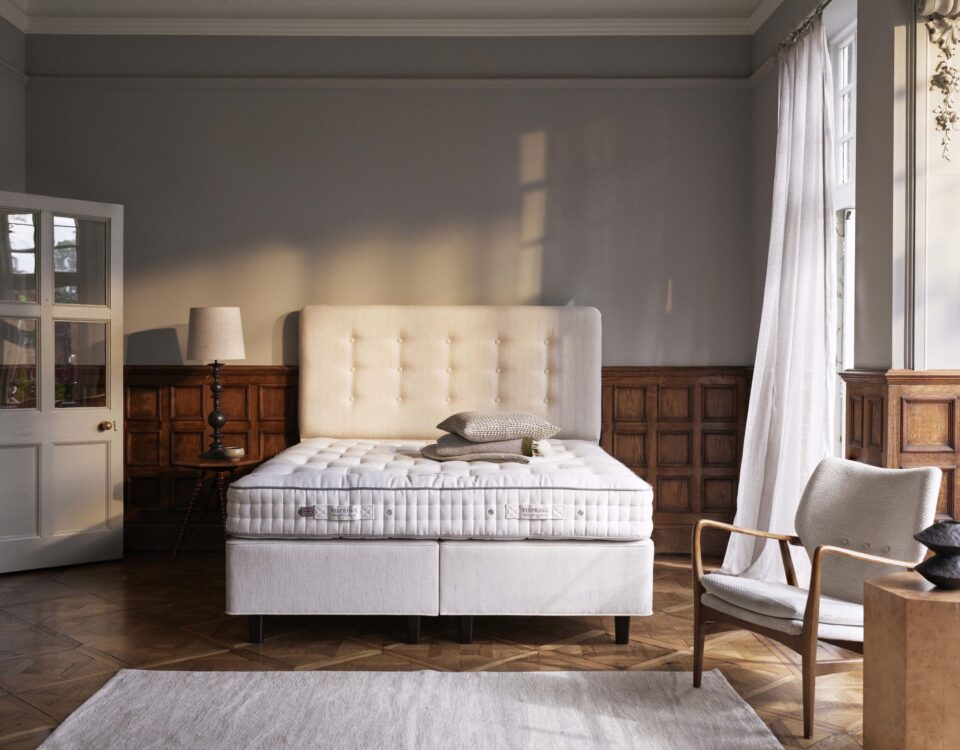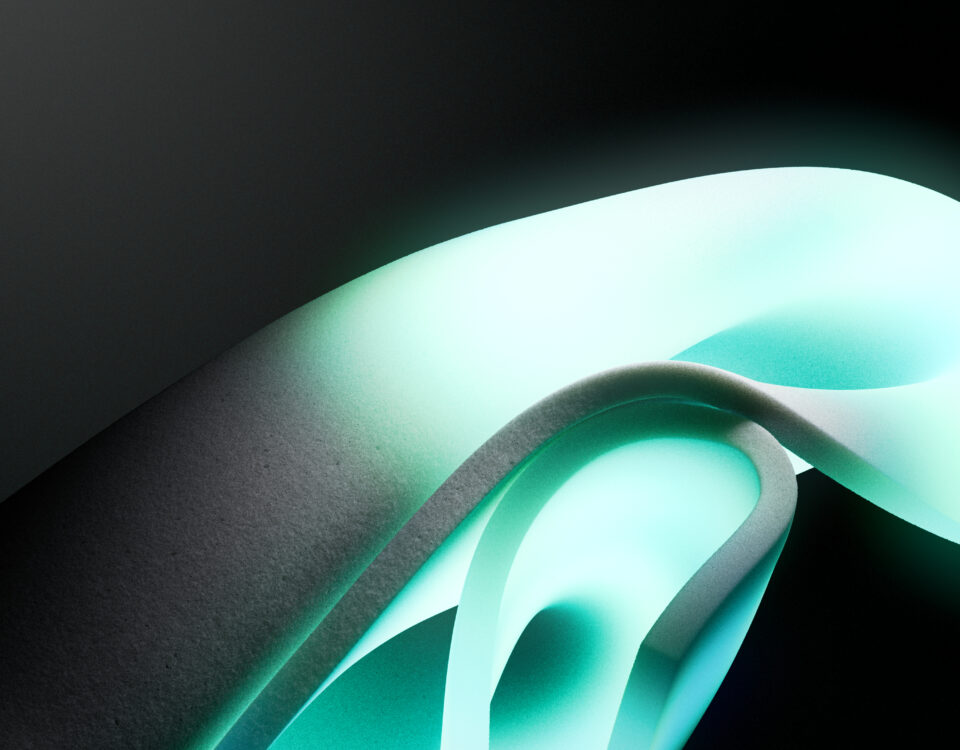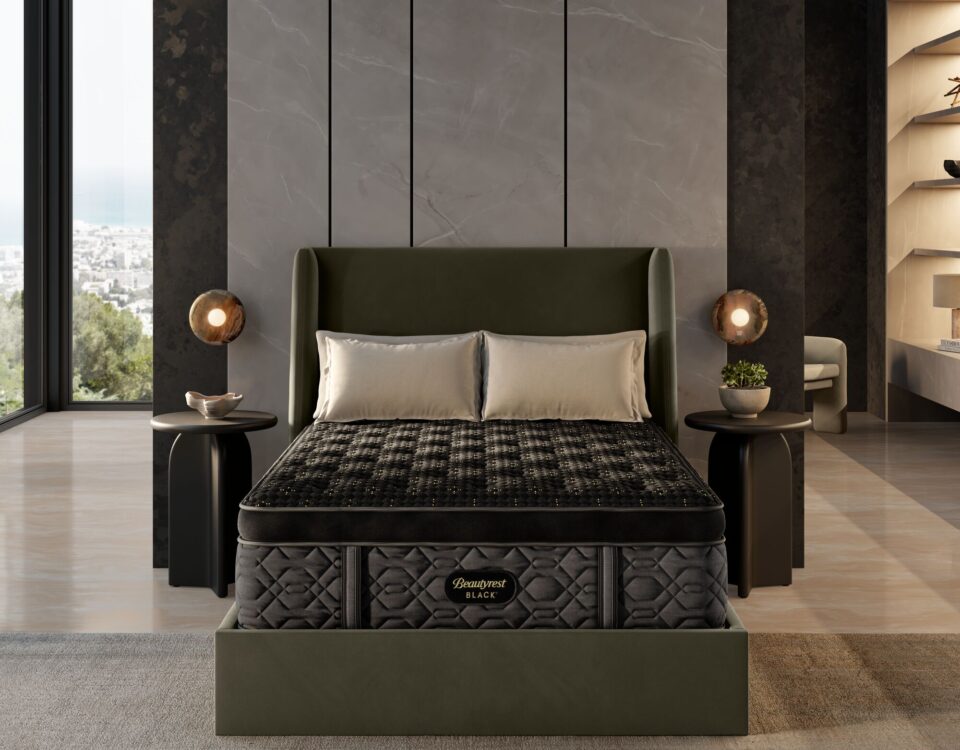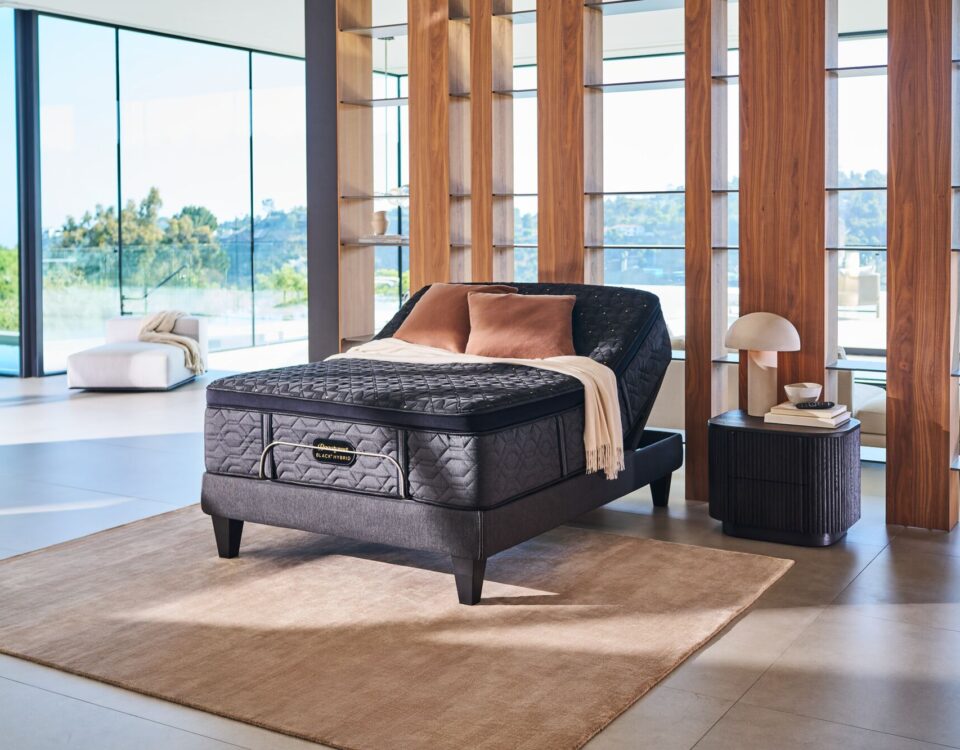Bed Basics: Compare mattress upholstery (part 1 of 2)
As we mentioned in a previous post, when you compare innerspring mattresses, you’re really looking at three basic components: coils, upholstery, and foundation. Upholstery refers to both the fabric covering the mattress and the layers of foam and cushioning inside the mattress. We’ll start by taking a look at the inside layers, which include insulator, support, and comfort layers.
An insulator layer in a mattress is the least glamorous position. The goal of the insulator layer is to separate the comfort foams from the springs. Usually a mesh style fabric covers the coils, possibly with another layer of cotton or batting on top of that. These layers will also help keep the comfort foams from shifting over the life of the mattress.
Support layers help determine the feel to the mattress. Is it firm to the touch, plush on top of firm, or plush all the way through? Support layers can be made of the same material as comfort layers but may be thicker or rated for different densities.
Which brings us to everyone’s favorite part: the squishy, resilient, and sleep-inducing materials that make up the comfort layers. The latest trends in mattress construction involve memory foam, latex foam, and a gel layer. But poly-urethane or visco-elastic foam are also common. Let’s take a look at the pros and cons of each.
Memory Foam
Great for cushioning, cradling, and pressure relief. Probably best as a thinner layer over the top of a firmer support layer. Higher density foam means higher quality, so look for 5.0 lbs per cubic foot or more. The “sink” factor can make it feel more difficult to change positions. First few generations didn’t breathe as well as other materials, so may sleep warmer than other materials. (Simmons created AirCool Memory Foam in the Beautyrest Black mattresses to combat this issue.)
Latex Foam
Molds well to the body. Both supportive and cushioning, so offers great pressure relief. Durable and resilient. Can find in both a denser, firmer style (Dunlop) and a springier style (Talalay). Most breathable type of foam, so regulates temperatures better than other foam options. More expensive than other foam options.
Polyurethane Foam
Must be High Resilience 2.5 lbs per cubic foot (HR) polyfoam to be durable enough as a comfort foam layer. Highest quality polyfoam performs similarly to latex but isn’t very common. Not as durable as memory or latex foams. Best used as a support layer rather than a direct comfort layer.
Gel Layer
New mattress technology, typically found in higher-end models. Great pressure relief, contours closely to the body while also providing support for areas that don’t settle as heavily on the mattress. Works well with a firmer support layer. Especially good for people who sleep warm; dissipates heat and regulates temperature very well. (Simmons’ Beautyrest TruEnergy mattresses have a GelTouch layer that conforms very well to the body shape and keeps you cool throughout the night.)
Natural Fiber
Can include wool, cotton, and hemp. Best for people who sleep in a single position as they need a “break-in” time and don’t adjust as well to position change as foam layers. Extremely durable. Regulate sleeping temperature very well due to natural breathability.
Many innerspring mattresses offer a combination of layer materials, with a focus on one in particular. When you compare mattress upholstery layers, take into account how you sleep. If you move around a lot, memory foam and natural fiber may not be for you. If you sleep hot, the gel layer may be a lifesaver. If you have questions, call our trained sales staff. They’ll be happy to explain the differences in comfort layers from model to model.




